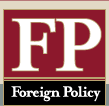
Foreign Policy
Summer 1998
How the IMF Works
The International Monetary Fund (IMF) and the World Bank—known as the Bretton Woods institutions—were established in 1944. The purpose of the IMF was to promote international monetary cooperation, exchange rate stability, and the expansion of international trade by acting as a lender of last resort when a member country faced an economic crisis.
In principle, the IMF has a structure akin to a financial cooperative. A member country’s contributions to the IMF (called "quotas") are based on its weight in the global economy. This weight also determines its voting power and borrowing capacity (called "drawings"). Quotas amount to an exchange of assets with little direct cost to taxpayers. For instance, in the case of the United States, its contributions entitle it to an equal amount of U.S. claims on other currencies. That is, just as other countries can draw U.S. dollars from the imf in times of need (such as pressures on the U.S. dollar), the United States can draw their currencies (be it the Japanese yen or the German mark) for itself. In fact, the United States has drawn on the IMF on 28 different occasions, most recently a $3 billion drawing in 1978.
By approaching the IMF, a member country facing a financial crisis has access to the fund’s resources and advice. As a country’s drawings become larger relative to its quotas, it must meet more exacting standards or "conditionalities," which typically mean significant changes in economic policies to ensure that the country’s domestic and external deficits are drastically lowered or even eliminated. Failure to meet those conditions results in suspension, renegotiation, or even cancellation of the program.
Although the total size of the IMF's quotas increased from about $9 billion at its creation to nearly $200 billion in 1997, it has declined relative to almost all relevant global economic indicators, whether the size of world trade, international reserves, or international financial flows.
—D.K.